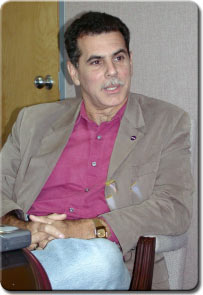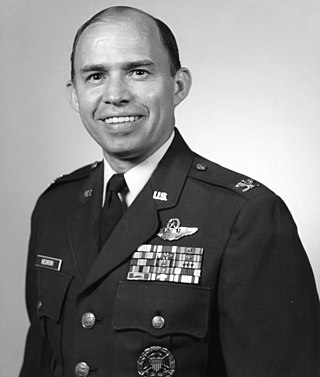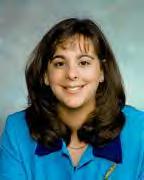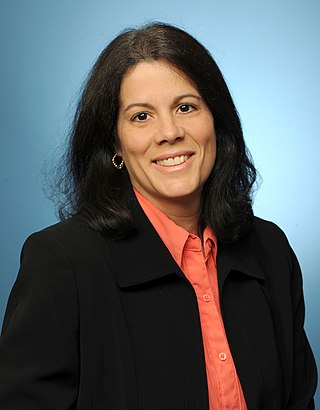
Nancy Jan Davis is a former American astronaut. A veteran of three space flights, Davis logged over 673 hours in space. She is now retired from NASA.

Félix Soto Toro, is an electrical designs engineer at NASA, who developed the Advanced Payload Transfer Measurement System.

Orlando Figueroa, previously the NASA Mars Czar Director for Mars Exploration and the Director for the Solar System Division in the Office of Space Science at NASA Headquarters and the Deputy Center Director for Science and Technology of the Goddard Space Flight Center. He has since retired in 2010 from NASA.
Pellín Rodríguez, was a Salsa singer. Rodríguez was a member of the musical group El Gran Combo and toured with them all over Latin America and Europe, gaining fame and popularity as a singer. In addition to his singing capabilities, Rodríguez had great comedic abilities and participated on comedy bits on various TV shows in Puerto Rico.

Miguel Rodríguez is the Chief of the Integration Office of the Cape Canaveral Spaceport Management Office.

Colonel Héctor Andrés Negroni is a United States Air Force officer, historian, senior aerospace defense executive, author, and the first Puerto Rican graduate of the United States Air Force Academy. He was commissioned by Spain's Fifth Centennial Commission to write the "Historia Militar de Puerto Rico".

James Robert Thompson Jr., known as J.R. Thompson, was the fifth director of the NASA Marshall Space Flight Center located in Huntsville, Alabama. He served as director from September 29, 1986, to July 6, 1989. Thompson also served as NASA's deputy director from July 6, 1989, to November 8, 1991.

David Arnold King is an American engineer who was the tenth Director of the NASA Marshall Space Flight Center in Huntsville, Alabama.
Hispanics in the United States Naval Academy account for the largest minority group in the institution. According to the academy, the Class of 2009 includes 271 (22.2%) minority midshipmen. Out of these 271 midshipmen, 115 are of Hispanic heritage. In 2004, of the total of 736 female midshipmen, 74 (10%) of them were of Hispanic descent.

Lissette Martinez, is an electrical engineer and rocket scientist. She is the head of the Wallops Electrical Engineering Branch and the lead electrical engineer for the Space Experiment Module program at the Wallops Flight Facility (WFF) which is part of NASA's Goddard Space Flight Center (GSFC) where she is responsible for the testing of ground and flight hardware. She is a notable alumni at the University of Puerto Rico at Mayagüez.

Monserrate Román a.k.a. "Monsi", is a Puerto Rican scientist in NASA who helped NASA build part of the International Space Station. She is the Chief Microbiologist for the Environmental Control and Life Support System project who determines how microbes will behave under different situations and in different locations, such as the nooks and crannies of the Space Station.

Mercedes Reaves is a Puerto Rican research engineer and scientist. She is responsible for the design of a viable full-scale solar sail and the development and testing of a scale model solar sail at NASA Langley Research Center in Virginia.

Amri Hernández-Pellerano is a Puerto Rican electronics engineer and scientist who designs, builds and tests the electronics that will regulate the solar array power in order to charge the spacecraft battery and distribute power to the different loads or users inside various spacecraft at NASA's Goddard Space Flight Center. She designed the power systems electronics for the Wilkinson Microwave Anisotropy Probe (WMAP) mission. WMAP is a NASA Explorer mission spacecraft which measures the temperature of the cosmic background radiation over the full sky with unprecedented accuracy.

Robert M. Lightfoot Jr. is former Acting Administrator of the National Aeronautics and Space Administration (NASA), serving from January 20, 2017 until April 23, 2018. Succeeding Charles Bolden, Lightfoot became the space agency's acting Associate Administrator on March 5, 2012. That job became permanent on September 25, 2012. He had previously served as the eleventh Director of the NASA Marshall Space Flight Center in Huntsville, Alabama, from March 2009 until his promotion in March 2012. On March 12, 2018 he announced his retirement from NASA effective April 30, 2018.

Robin Neely Henderson is the Associate Director, Management, of the NASA Marshall Space Flight Center located in Huntsville, Alabama. She was named to become the center's Acting Director effective August 3, 2012, following the retirement of the previous director, Arthur E. Goldman, to take a private sector position. On September 25, 2012, NASA named Patrick Scheuermann as the center's new permanent director.
Werner Richard Kuers was a German-American engineer and expert in guided missiles. Kuers worked at Peenemünde Army Research Center in manufacturing and later, as part of the "von Braun rocket group" through Operation Paperclip, at White Sands V-2 Launching Site and the Marshall Space Flight Center.
Karl Ludwig Heimburg was a German-American engineer and Operation Paperclip hire. Heimburg was a member of the "von Braun rocket team" and served as the initial director of the Test Division at the Marshall Space Flight Center.









